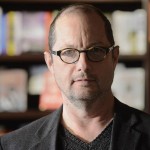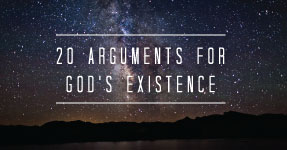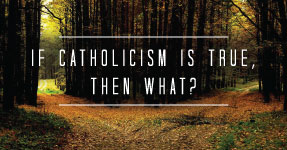Why the Church is Ahead of Mathematicians on Ecumenical Dialogue
by Dr. Stacy Trasancos
Filed under Atheism, Religion, Science
A Stanford School of Engineering research team has developed a new mathematical model for how society becomes polarized, published in the March online edition Proceedings of the National Academy of Sciences. These models are similar to models that seek to predict the behavior of matter based on certain known modes of action, and they are always more difficult for human systems because humans are, inherently, unpredictable (that free will thing). However, they are not without benefit. Opinionaters, debaters, political pundits, anyone passionate about ideologies, can benefit from the insight.
As a Catholic trying to understand better ways to communicate with others, I see some ecumenical insights in this study. Catholicism is all about unity because our God is unity, three Divine Persons who are One God. But as we all know, people are divided. Ecumenism calls us all to engage with the world, whatever our belief, and move beyond our own spheres. Consider the models.
Model 1 – Homophily
The prevailing mathematical theory of social polarization goes like this: Like seeks like. People surround themselves with other people who share their opinions, thereby reinforcing those like opinions. Thus the name, homophily (loving the same).
The model also assumes that people within the polarized groups form opinions to minimize disagreement among like-minded peers, so that the opinions within the polarized group tend toward an averaging unity. People want to appear unified within their groups.
But does that hinder groups from uniting with outside groups? It would seem so.
The Stanford researchers, however, refute this model of homophily. Why? As one of the doctoral candidates and co-author of the paper put it, “You can’t create outliers by averaging.” Over a long enough time, they say, this model would predict that society as a whole, as more and more averaging occurs, would become unpolarized and united, monophilic. I don’t agree with this conclusion because mathematically or naturally, there’s no law that averaging within an outlier subgroup will ever be, or must ever be, extended to the entire population. Just because some molecules react with other ones, doesn’t mean the material world will someday be a mono-substance. But consider the other model anyway.
Model 2 – Biased Assimilation
The research team at Stanford uses another social science model called biased assimilation. This model assumes that what polarizes people is the way they form opinions. When presented with inconclusive evidence (for instance, studies about homosexual behavior, studies about contraception and abortion, studies about whether animals can think, etc.) people easily accept evidence that supports their already held opinion, and discredit anything that does not fit it. They, thus, tend to make more out of inconclusive evidence than they should. It seems counter-intuitive that two people could be presented with the same information, but become further divided in opinion, but the researchers say that is what happens.
Okay, I think we all can relate to that.
If you’ve debated online, you know how it happens. You provide a link to something that you just know will convince the opponent to have an epiphany, and it doesn’t work. Instead, you both talk past each other because you both are trying to further hold your opinions. Have I been guilty of this too? Probably, without even realizing it. At least being aware of the tendency will help to avoid it.
Biased assimilation shows us also why we need to be careful about media choices. Highly polarizing news sources intentionally seek out stories that will further polarize; it’s how they build their audience. Likewise, Internet targeting systems also place ads and news stories in our feeds based on computational preferences. It’s something to be aware of, especially the next time you read or hear a story that makes your blood boil. Try not to assimilate the information with bias, try to understand what the other person is saying.
Catholic Model – Four Concentric Circles
Here’s the thing. I generally find myself wondering after reading these studies why they needed math to figure this out. Isn’t this common sense? The Catholic Church has been pondering human nature for a long time, and rather than mathematical models, Pope Paul VI, for instance, uses an analogy in his 1964 encyclical on ecumenism, Ecclesiam Suam. He describes four concentric circles (96-115) that hold all mankind. Rather than viewing mankind as forming groups and subgroups that are either polarized or united, he describes mankind as one large circle, already united by God, one species.
The circle of mankind includes atheists, other religions, and other Christians — everyone. The next, smaller circle is that of all religions, united because they all seek God. The third inner circle is that of Christians, united because they believe in and love Christ. The fourth, innermost, smallest circle is that of Catholics. So instead of the seeing mankind as polarized by opinion into unmixable substances like oil and water, Catholics are asked to view mankind as one race already and to work from the inner unity we have as Catholics to reach out and draw others in.
So, there is some truth in the Homophily Model, and we ought to avoid seeing ourselves as isolated groups only uniting within. There is some truth in the Biased Assimilation Model, and we ought to be careful that our media sources do not cement extreme biases. However, no mathematical model can ever fully account for the inherent free will of humans. Any parent of a two-year-old or broker on Wall Street knows that. As much as we may benefit from the insight of the mathematical models, I still think the Catholic Church is ahead of the mathematicians on this issue. And I was careful not to assimilate them with bias.
Related Posts
Note: Our goal is to cultivate serious and respectful dialogue. While it's OK to disagree—even encouraged!—any snarky, offensive, or off-topic comments will be deleted. Before commenting please read the Commenting Rules and Tips. If you're having trouble commenting, read the Commenting Instructions.













